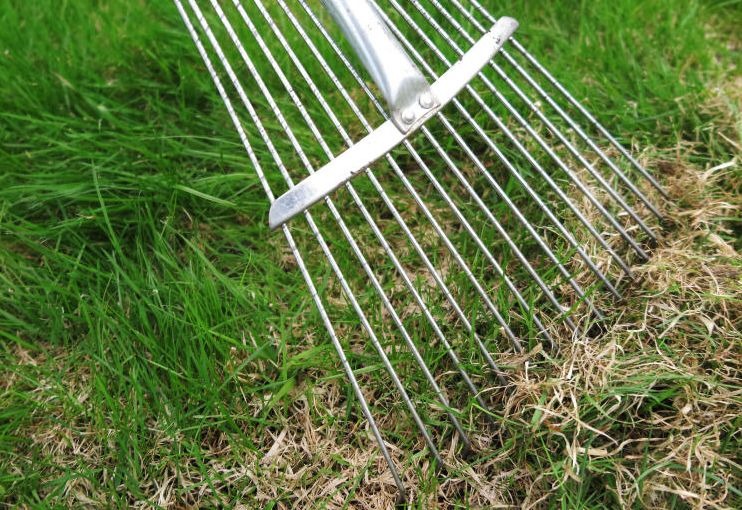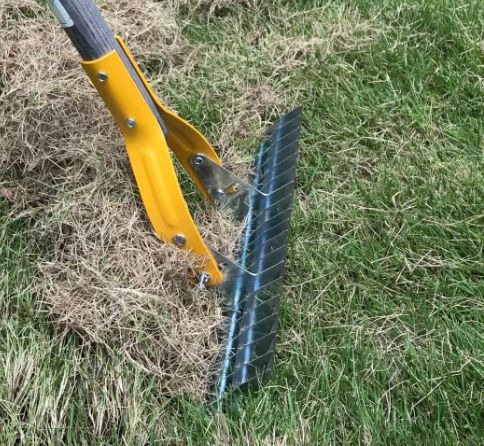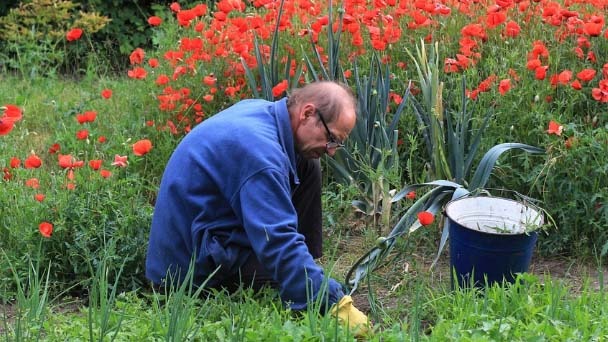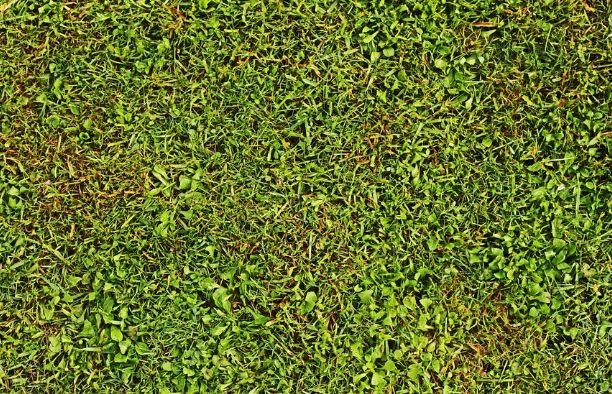When to Dethatch Your Lawn
Only warm-season grasses like Kikuyu, couch grass, zoysia, and buffalo grass are typically recommended for dethatching. After giving the grass time to recover from the winter, the best time to dethatch is from late October to early December. Your lawn might not be able to recover over the winter if you dethatch too late in the growing season.
Cool-season grass shouldn't be subjected to certain dethatching techniques. For problems with thatching in cool-season grass, coring is advised as a superior solution. View the complete lawn coring guide here. However, if you give them enough growing season—at least 30 days—to recover, you can use power rakes on them in the fall.
How to Dethatch Your Lawn
You can dethatch your lawn using a variety of techniques and tools.
Dethatching Rake
You can choose to use a manual dethatching rake and your own strength. The least disruptive approach is this one. To remove the thatch from the ground, you must run the tines over the entire lawn. While this technique can help you save money, it is also the most labor-intensive and impractical if you have a larger lawn or a more severe thatch buildup. This method is for people who have a lot of time and energy to devote to dethatching because it takes place at least twice and sometimes three times a year for a lot of lawns. Another drawback is that it is a slower process.
Lawnmower
Another method for removing thatch is through scalping, which is mowing the lawn to as close as possible to the soil or its "scalp." In order to cut the grass as close to the soil as possible and get rid of thatching, this technique involves setting the lawnmower as low as possible. Be careful when cutting your lawn because some grass can withstand being aggressively mowed, but other grass needs a few leaves to recover.
Power Rake
The use of specialized equipment, such as a power rake, is another technique for dethatching the lawn. Power rakes have the drawback of being rather pricey if you buy them yourself because they are specialized equipment. Renting the machine to dethatch your lawn is a more practical option, especially since you will only need it twice or three times per year. Another choice is to hire experts to take care of the dethatching for you.
The soil must be moist but not drenched in order to use power rakes for dethatching effectively. The day before, water it. If the ground is too soggy, additional healthy grass may be pulled out with the thatch. Use the power rake to go over a few spots and adjust as necessary if you are not yet familiar with how deep you should set the tines. The tines should be positioned so that they can reach deep enough to rake off the thatch without going too far and uprooting the soil. To ensure that all undesirable thatching is eliminated, you might need to make two or more passes over the lawn with a power rake.
Scarifier
Scarifiers are also known as dethatchers. Scarifiers are used for an aggressive dethatching process as opposed to power rakes. This dethatcher digs deep into the ground in addition to removing surface thatch. For lawns that are already in need of reseeding or the application of new instant grass, some people use scarifiers.
The process for scarifying is essentially the same as that for using power rakes, with the exception that the objective is to drive the tines or blades deeper so that they can scar the soil.

Common Causes of Thatch
According to Don Callahan of the Yamhill County Extension in Oregon, people used to believe thatch is made up of grass clippings. But thick thatch is a result of other things:
- Dead leaves decaying along with stems and roots
- Roots growing in the thatch but not reaching the soil under it
- Lateral shoot growth (aka stolons and rhizomes), something that can happen when thatch interferes with roots trying to grow down
- Infrequent mowing. During the growing season, lawns should be mowed weekly. If you want to keep measuring, check out a complete list of recommended mowing heights for each type of grass.
- Taking off too much at once: In order to mow properly, you should adhere to the one-third rule, which states that you should only remove up to one-third of the grass's height.) per mow. It can weaken the grass and prolong its recovery time to remove too much at once because of the stress this causes. If your lawn is too high, mow it more frequently to bring it down.
- Excessive water: Giving the lawn too much water or having wet soil (often caused by drainage problems)
- Dry soils, when it is chronic or when the thatch is keeping water from getting through
- Pesticides used on a regular basis, not as needed. They can also eliminate earthworms, which promote the decomposition of thatch.
- The type of grass matters. Some turfgrass species produce a lot of stem tissue: Cool-season grasses to watch include Creeping red fescue, creeping bentgrass, and Kentucky bluegrass. Perennial ryegrass and tall fescue, on the other hand, don't contribute significantly to the buildup of thatch.
What to Do After Dethatching
The removed thatch should be immediately cleaned up and properly disposed of. To remove the thatch, you can either rake it off by hand or use a rotary lawn mower equipped with a catcher.
Leave the thatch off the ground because it will cover the grass and prevent it from growing. Regardless of the technique used, after dethatching, feed and water the lawn. Topdressing and reseeding may also be necessary if more aggressive dethatching is performed.


